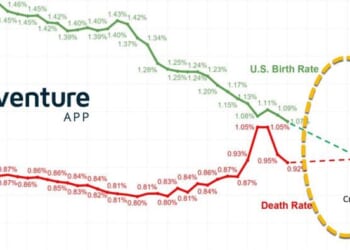
In the world’s richest country, nearly 36 million Americans still live below the poverty line. To address this persistent problem, various policymakers are turning to an idea that periodically captures the public imagination: a guaranteed basic income in the form of direct cash payments.
But ending poverty in the U.S. will take far more than simply handing out cash. To truly fight poverty in the U.S., we need to focus on helping more people participate in the modern economy—and give them the tools to support themselves and their families with dignity.
In two widely discussed recent guaranteed income experiments from Texas and Illinois, researchers found that giving low-income Americans $1,000 a month for three years did not do much to alter the difficult circumstances of their lives—not in terms of employment, health, or parenting. Results from the Baby’s First Years experiment similarly failed to show substantial improvements in economic hardship, psychological distress, or relationship quality among mothers with newborns who received cash grants of $333 a month. Nor was there evidence of discernible improvements in child development.
All this might give the impression that poverty in this country is an insurmountable problem, particularly in light of recently released Census numbers that show the share of Americans living under the poverty line barely budged over the past year. But it is not. The U.S. can absolutely make progress in reducing poverty, as our new paper shows it has done over the past half-century.
The tantalizing idea that poverty can be “solved” by simply giving people money misses the fundamental challenges millions of Americans face each day as they try to support themselves and their families. Truly helping people burdened by poverty demands more than cash, it requires helping people overcome the myriad barriers that stand in their way of flourishing. Our nation needs an anti-poverty agenda that invests in people and families.
First, the most reliable path to individual economic security is to obtain the skills that lead to stable jobs and adequate pay. The facts are stark: Nearly a third of adults without a high school diploma live in poverty, compared with just 6 percent of college graduates. These differences do not just reflect underlying differences in the types of people who graduate high school or college—research confirms that greater education causally leads to improved economic security.
While efforts to promote college attendance may help, a key challenge is that too many low-income students who do take the first step to enroll in college never graduate. And financial assistance alone does not help low-income college students make it through their programs. They often need individualized support services that help them address various personal challenges hindering their success in school. Encouragingly, evidence points to effective solutions. The comprehensive student-support program provided by CUNY’s ASAP—which offers students assistance including tuition waivers, unlimited transit access, and dedicated academic and career advising—improves student outcomes and raises earnings. Flexible high schools for adults, such as Goodwill’s Excel Centers, and sector-based workforce training programs, like Year Up and Project QUEST, help students outside a college setting obtain skills valued by employers. Year Up combines technical and professional skills training with internships and mentorship in fields like IT and finance, while Project QUEST partners with local employers and colleges to offer tuition assistance, counseling, and job placement in high-demand sectors such as health care and advanced manufacturing.
Second, healthy, stable marriages are a bedrock of economic security. The link between family structure and poverty is undeniable: Census data show poverty rates of 8 percent in married-couple households, versus 24 percent in families led by single mothers. This too reflects more than just correlation. Even after adjusting for factors such as education and age, poverty rates are much lower among those living in married-parent households. The simple reason is that having the contributions of two committed adults in a household generally means more resources than from one alone. Stronger families are not just good for children—they are essential for breaking the cycle of poverty.
Programs that provide income support to single-parent families are critically important for leveling the sharp disparities in resources and opportunities that are evident across different family structures. But even more generous cash transfers to single mothers would not make up for all the resources a committed second parent can provide. We must address the underlying reasons for the rise in single-parent households in the U.S., particularly among adults without a college degree.
Creating more pathways for men without a college degree to gain stable, well-paying jobs would result in more “marriageable men,” though research suggests this fix alone is unlikely to turn the tide on the decline in marriage. Investing in programs that help low-income couples establish healthy relationships, including preventing intimate partner violence, is a necessary additional step. Programs in this domain typically include skills-based education and coaching, and emphasize communication, conflict resolution, emotional regulation, and joint decision-making. Lastly, the country’s current tax and transfer system too often penalizes low-income couples who marry with higher tax rates or loss of benefits; such marriage penalties should be eliminated.
Importantly, the obstacles to escaping poverty rarely appear in isolation. People often face many barriers at the same time. A job training program, for instance, might not be effective at helping someone find a better-paying job if they are experiencing homelessness or trapped in an abusive relationship. That’s why holistic case management programs tailored to the individual can meaningfully help people living in poverty change their lives. The Padua program run by Catholic Charities Fort Worth, and now being replicated in many other cities, is an example of one such program. A case manager might support one individual prioritizing finding stable housing, while others might focus on improving job skills. A randomized controlled trial of Padua found that the program helped individuals obtain stable housing and improved employment outcomes.
None of this is to say that cash transfers should not be a part of the fight against poverty. Improving the material well-being of children in poverty is imperative for their immediate development and long-term prosperity. Mounds of research show that alleviating childhood hunger and investing in child health improve long-term outcomes for children. And there are times when a temporary infusion of cash has been shown to help families get through an acute financial crisis and avoid long-term negative consequences. For instance, emergency financial assistance can help prevent someone from falling into homelessness. But cash alone is not a long-term solution.
The persistence of poverty in America is bad for the country’s moral and economic fiber. It impedes individual human flourishing and overall economic growth. Fighting the fundamental causes of individual-level poverty in our very prosperous country requires a more ambitious approach that advances people’s ability to provide for themselves and their families.

















